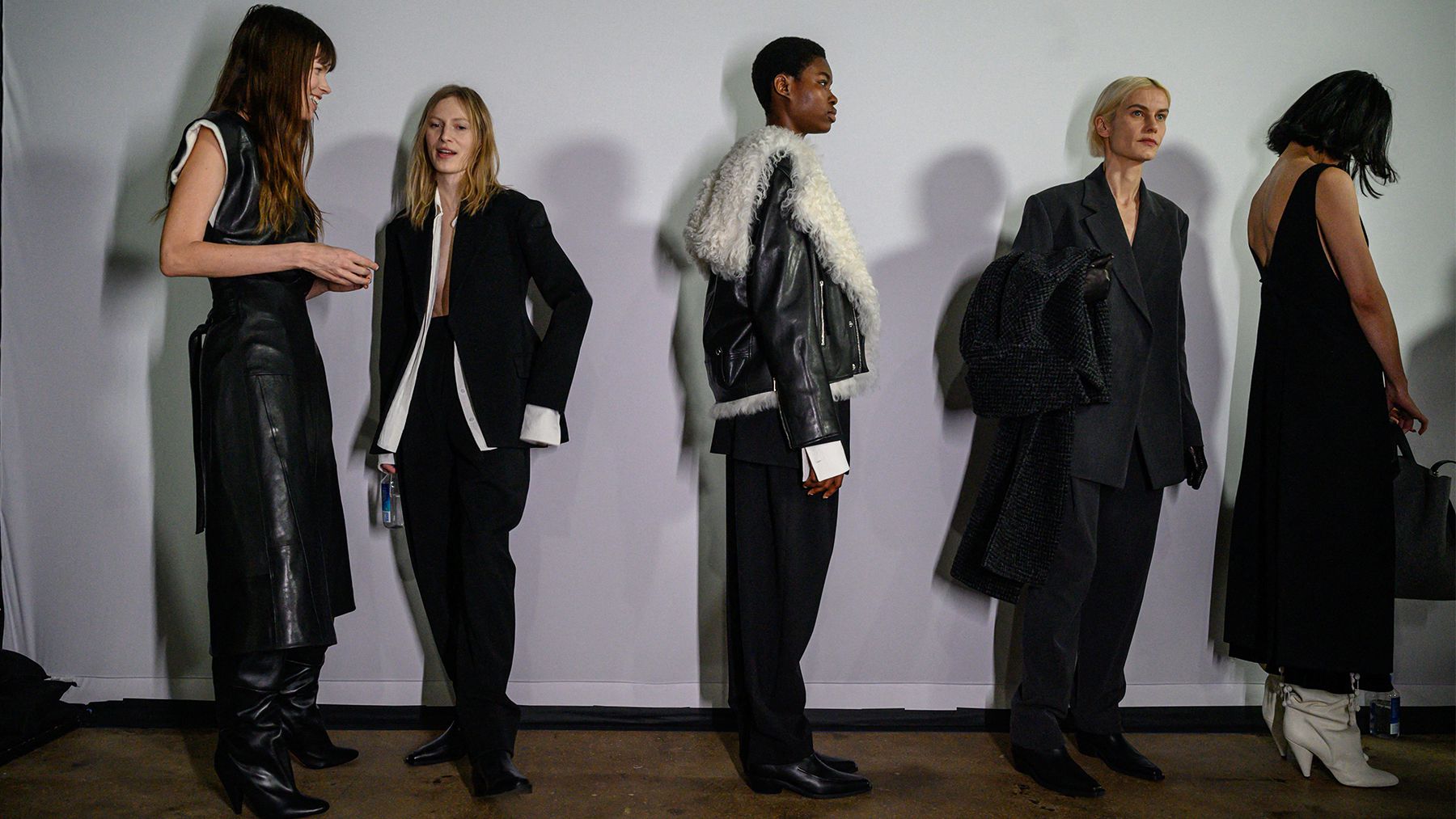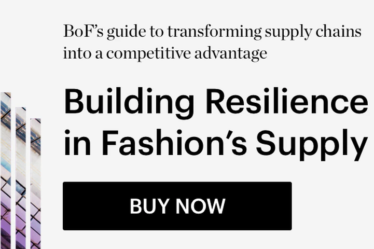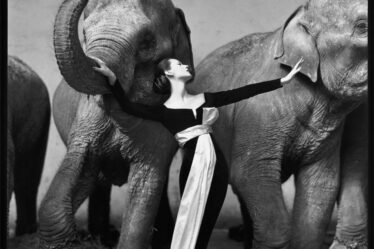
NEW YORK — At the start of New York Fashion Week, CFDA chairman Thom Browne opened a letter to members on a positive note: “This is our Super Bowl, the only difference is that we aren’t competing against each other, we are all supporting each other to create work that inspires.” But even an optimist like Browne sees storm clouds, concluding his message, “Currently I am scared. I am with all of you in spirit. I am sending you the best of luck.”
The state of the US economy remains uncertain, while pop cultural pundits scan the runways for provocations that could make the nightly news. But New York designers are facing their fears. In fact, in the first three days of NYFW, some seemed to laugh in the face of danger as they got weird with animals, fairies and food. The emphasis was less on wardrobing and sportswear, once the staples of American fashion, and more on designs conceived to draw attention for celebrities or those who want to feel like them. The independents at the New York shows are definitely in their Main Character Era.
The Rodarte designers Kate and Laura Mulleavy kicked the week off with a gothic fairy collection destined for red carpets. A front row of actresses from Natasha Lyonne to Quinta Brunson and celebrity stylists like Kate Young and Leslie Fremar confirmed the Mulleavys’ focus on occassion wear over previous forays into jeans and leather jackets. It suits them. As impractical as their mermaid dresses and tinsel couture seem, they read as believable because they come from a genuine place. The Mulleavys are weirdos and weirdos love them — women and people of all genders who want to be seen and celebrate their strangeness gravitate to Rodarte for hand-painted caftans, spiderweb knits, spooky witchwear, and splashy sequin numbers. It’s more than you can say for other red carpet-leaning brands that add a ruffle or a train as a gag for fawning entertainment outlets. The Mulleavys don’t make fanciful clothes to attract attention. They make them because they really, truly, believe in fairies and vampires and gothic romance. It’s a brand of magic that lands well in the, at times, too pragmatic American fashion scene.
Weirdos are also welcome at Collina Strada, where designer Hillary Taymour titled her collection “Please Don’t Eat My Friends.” Models wore glittery animal prosthetics designed by Isamaya Ffrench and started to crawl and gallop on the runway, embodying the lizards, dogs, and deers printed on their clothing. “It’s about fun,” demurred Taymour backstage after the show, where a model played around with a hay bale suspended from crystal straps designed like a purse. Collina Strada’s fauna was strange, though there was nothing like the fury that erupted after Schiaparelli’s Daniel Roseberry made lifelike animal replicas into dresses during the Spring 2023 couture shows, and the clothes were good, if a little safe. Rather than push into new arenas this season, Taymour offered already popular Collina Strada styles: miniskirt belts, cargo pants, patterned button-down shirts, and meshy layering tanks. Taymour has been in the running for big designer gigs and has the hootspa and verve to lead her brand or another into the future.
Area delivers clothing and antics on a level unparalleled elsewhere in New York. After last season, where models in a pyramid-shaped collection struggled to walk down the runway, creative director Piotrek Panszczyk wanted to make things easier. Clothing shaped like bananas and watermelons was, obviously, the answer. Panszczyk is a smart student of art and fashion and pulled together references from Josephine Baker to The Velvet Underground, and Cristóbal Balenciaga to Erté, landing on a thesis that all beautiful things expire — including his well constructed sloped shoulder tailoring. (Note the fruit fly headpieces implying decay.) It was a silly, pretty, funny and provocative outing that pushed into nylon tracksuits, more wearable mesh pieces, and feathered shoes done in collaboration with Sergio Rossi that, if a quick poll of sidewalk pundits is to be believed, didn’t leave a good taste in everyone’s mouth. But tastes vary and challenging convention is a worthy pursuit.
Designer Carly Mark knows a thing about mixing the fanciful and the pragmatic at her brand Puppets & Puppets. What started as a DIY art project in 2019 has become a viable fashion business based on the success of its cookie-adorned It Bag. This season, Mark continued to make food into fashion, sending out egg-covered shoes and dotting her runway with rotting cabbage and loaves of stacked bread. Sure, the beaded egg white bralette was a little kooky, but her sexy sequin midi dresses and sharp trousers are sure to find customers.
Even Dion Lee, whose expertise is in sexy pret-à-porter, got weird with things this season. Inflatable puffer jackets were a prelude to a finalé dress made of chiffon wrapped around industrial rubber tubing his team purchased at a hardware store on Canal Street. Lee loves a strange experiment, but here he landed on something as beautiful as it was novel—ditto for his draped separates based on the central pleats of a famous Charles James style.
Elsewhere, Anna Sui is on a multi-season journey to bring fantasy to reality. As always she plumbed the depths of history to marry the Peppermint Club, a favourite of Jane Holzer and The Rolling Stones, with the illustrations of Christian Berard in a sweet collection of tea dresses and slips. After a season off, Sui’s instincts for what young women today want to wear are sharper than ever, with flocked bed jackets, faux fur Penny Lane coats, and sequin base layers in rose and lilac. Just look at her niece, the actress Chase Sui Wonders, in a see-through brown Anna Sui slip and fairy wings beside her beau Pete Davidson for proof.
Sandy Liang could take a page from the Anna Sui playbook. She is a designer, like Sui, who references nostalgia and, at times, wears those references on her sleeve. At her recent show, you could taste the impact of other female designers from Miuccia Prada to Molly Goddard — sometimes distractingly so. Liang’s shapes are a little boxier than what’s on the runways in Europe, which give her spritely sailor dresses and cropped cardigans a wider reach. The mere number of square toed ballet flats in her front row, by my count around two dozen, proves that her easily digestible clothing has a devoted audience, but she could add a bit more of her own whimsy. Next season, maybe a performance or a party? A catwalk doesn’t do enough to get her personality across.
Heron Preston has fans for miles — literally. The line for his show rolled around the block. He took inspiration from these very streets for his show. There were sidewalk painters that opened it and a videographer in a mask who loomed about, both distractions from Preston’s well considered but somewhat expected collection of graphic tees and bombers, printed jeans, loose cargo trousers, and aggressively sexy womenswear. The two standout looks were worn by Kerolyn Soares (Look 37) and Alton Mason (Look 38). She wore a blazer fastened by a carabiner with leggings and sneakers and he wore a shirt and tie tucked into sweatpants — both looks were far enough from how Preston’s friends and fans already dress to make them feel worthy of the runway.
Two expert collections on Saturday from Proenza Schouler and Eckhaus Latta offered the most compelling visions for the future of American ready-to-wear.
At Proenza Schouler, Jack McCollough and Lazaro Hernandez were unofficially celebrating their 20th anniversary. Over the past two decades, they have peaked and valleyed through several design languages, struggling at times to find their footing in a crowded luxury market. If McCullough and Hernandez were successful this season, a new starting point may have had something to do with it. “It’s the first season where we made the mood board just out of headshots of the women in our lives,” said McCollough. No artist references, no big narrative.
Letting their friends guide them, the designers struck upon a luxurious, free spirited look that works on Oscar-nominated actresses (Chloë Sevigny opened the show) and artsy socialites (Olympia Scarry soon followed on the catwalk), and will surely resonate with people bored by bland wardrobe essentials. The tailoring featured high slits and vents to amplify movement. Metal yarn dresses were moulded around the body, worn over craggy-hem ivory slips and mixed media leather, chiffon, and wool dresses had a clever wit about them. Paired with hoodies or oversize totes, the Proenza pieces struck a note of reality, helped out by a soundtrack featuring a series of short stories written by Ottessa Moshfegh and narrated by Sevigny. In one story, Moshfegh wrote, “Maybe ideology is a luxury.” By leaving their big ideological inspirations behind, Hernandez and McCoullough found a practical, uncanny luxury in the beauty of the everyday.
Eckhaus Latta’s Mike Eckhaus and Zoe Latta are America’s high priests of normal, effective clothing. In past seasons, their slinky curved-seam jeans and transparent knits have been counterbalanced by ethereal sets and performances, but this season Latta explained they chose a black box theatre at night as the venue to prove they are “more dedicated to everyday clothes and how to make those interesting.”
Tight, corseted jackets; exposed seam coats in stonewashed colours; sliced open cardigans; translucent copper dresses; and pelt-like gilets made from faux fur came together on the darkened runway in a feral, sexy and dangerous way. In the past, the designers have played with minimalism and sexiness, but here it felt like a punch to the gut of urgent, sensual pieces that, if layered right, could be safe enough for the office or twisted enough for the club. Ponyhair platform shoes helped give the models a looming, haunting edge and the appearance of actor Jon Gries, recently of “The White Lotus,” only made the Eckhaus Latta proposition feel more surprisingly real.
The secret, as Eckhaus Latta and Proenza Schouler prove, might be that less is more. In this scary time for fashion, trusting one’s gut and making clothes designers themselves believe in and want to wear feels more real and essential than ever. With collections from Khaite, Altuzarra, Thom Browne, Luar, Gabriela Hearst, Willy Chavarria and Michael Kors still to come this week, let’s see if the idea holds.



